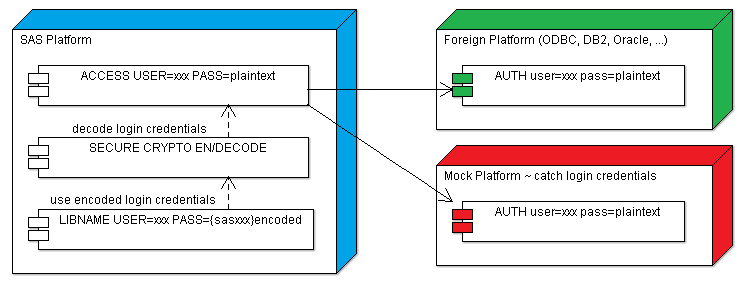| PROC PWENCODE METHOD |
Data Decryption Status |
Decode Password Encryption Algorithm |
| {SAS001} is insecure |
successful decoded |
Very simple decode / base64 |
| {SASENC} is insecure |
successful decoded |
Use a 32-bit key to decode passwords / SAS proprietary |
| {SAS002} is insecure |
successful decoded |
Use a 32-bit key to decode passwords / SAS proprietary |
| {SAS003} is insecure |
successful decoded |
Use a 256-bit key to decode passwords / AES |
| {SAS004} is insecure |
successful decoded |
Use a 256-bit key plus 64-bit salt to decode passwords / AES |
